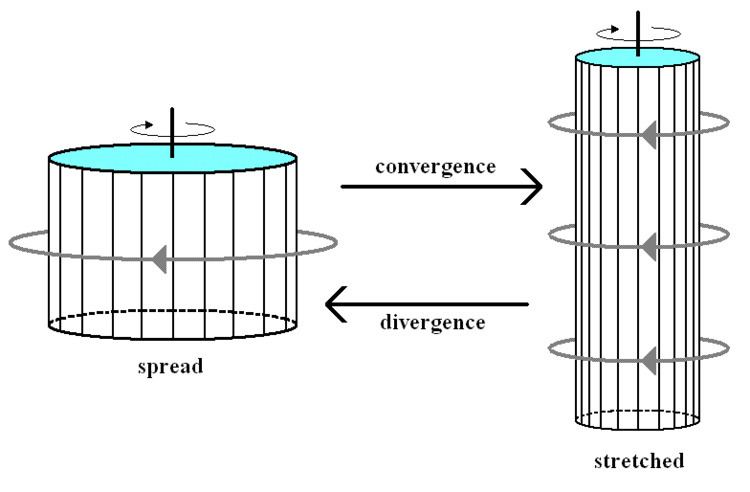 | ||
Potential vorticity (PV) is a quantity which is proportional to the dot product of vorticity and stratification that, following a parcel of air or water, can only be changed by diabatic or frictional processes. It is a useful concept for understanding the generation of vorticity in cyclogenesis (the birth and development of a cyclone), especially along the polar front, and in analyzing flow in the ocean.
In meteorology, the potential vorticity unit (PVU) is defined as
It is also useful in tracing intrusions of stratospheric air deep into the troposphere in the vicinity of jet streaks, a concentrated region within a jet stream where the wind speeds are the strongest. It acts as a flow tracer in the ocean as well. It can also be used to explain how a range of mountains like the Andes can make the upper westerly winds swerve towards the equator and back.
Baroclinic instability requires the presence of a potential vorticity gradient along which waves amplify during cyclogenesis.
PV conservation
Carl-Gustaf Rossby first introduced potential vorticity in his 1936 paper "Dynamics of steady ocean currents in the light of experimental fluid mechanics". This work was based on an analysis of a shallow water model of the Gulf Stream. The concept was developed further, within a few years of Rossby's seminal paper, by Hans Ertel. Mathematically, Ertel's form of potential vorticity is given by the equation:
where
